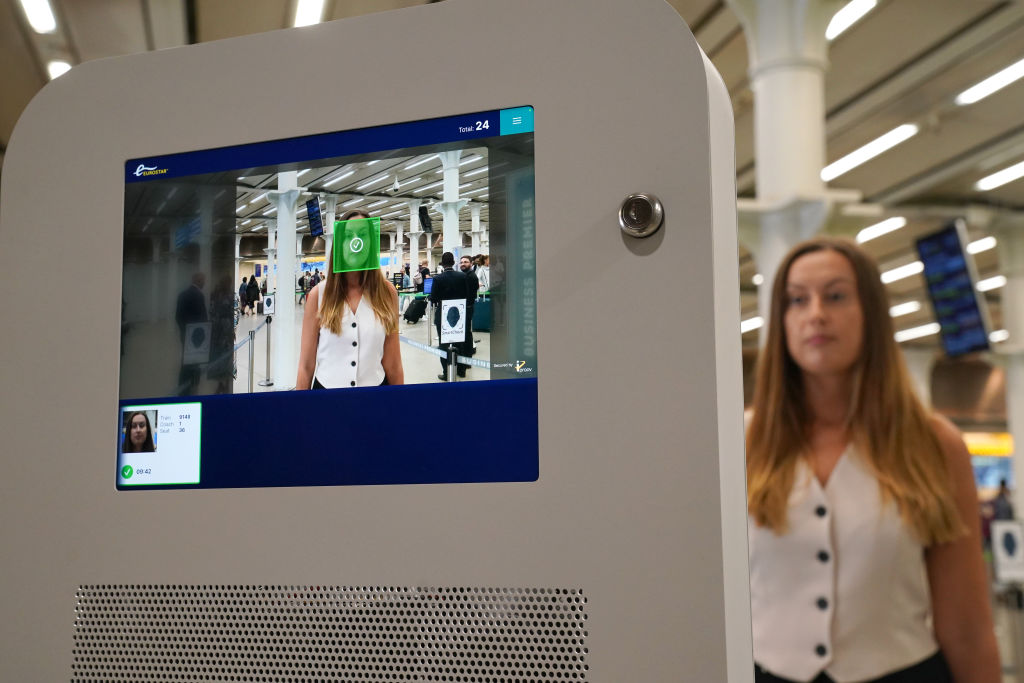Is it time to stop worrying about the war on cash and begin paying with your face? Over the past decade, the movement toward a cashless society has been gaining steam. In a climate hyping all things artificial intelligence, this world could be coming close to being realized.
The War on Cash – Eyeballs, Faces, and Palms
In March, JPMorgan Chase announced that it signed an agreement with PopID to help create a biometric payment system in 2025 by using its commercial identification infrastructure. Many US retailers have experimented with this technology, using face authentication, fingerprints, and palms. Some big brands have been utilizing these tools for a while: Amazon maintains a pay-by-palm mechanism at its brick-and-mortar locations, while Apple Pay allows users to pay with a face scan.
Liberty Nation reported this past summer on Worldcoin, a digital identification platform produced to separate real humans from AI algorithms. Footage showed scores of individuals scanning their eyeballs in an Orb device, enabling Worldcoin to “verify humanness and uniqueness” and construct “the biggest financial and identity community” possible.
 But while many cashless proponents argue for simplifying transactions, the newest narrative is to prevent fraud and secure your identity. PayPal is perfecting a native biometric payments system to stop odious actors in their tracks. Google Play recently established a biometric accessibility feature. Mastercard and Visa have turned bullish on biometrics for security purposes.
But while many cashless proponents argue for simplifying transactions, the newest narrative is to prevent fraud and secure your identity. PayPal is perfecting a native biometric payments system to stop odious actors in their tracks. Google Play recently established a biometric accessibility feature. Mastercard and Visa have turned bullish on biometrics for security purposes.
“Our focus on biometrics as a secure way to verify identity, replacing the password with the person, is at the heart of our efforts in this area,” a Mastercard spokesperson told CNBC. The payments provider launched pilot programs in 2022 that allowed shoppers to pay with their palms or faces without tapping, swiping, or inserting credit cards.
For these companies, the marketing scheme is to make secure cashless payments convenient and straightforward. The business news network, reporting on the JPMorgan-PopID partnership, informed readers that “PopID simplifies this process by requiring just tapping an on-screen button, and then looking briefly at a camera for both loyalty check-in and payment.”
Is there a demand for any of this? If various businesses are investing huge sums into this technology, there must be. By 2026, biometric payments will reach three billion users and total $5.8 trillion in worldwide value, according to a Goode Intelligence forecast. This is unsurprising since a Cato Institute 2023 Central Bank Digital Currency National Survey learned that a third of Generation Z voters supported the federal government installing surveillance cameras.
Hooray for Biometrics
A 2023 study by PYMENTS revealed that consumers, especially the younger demographics, are content with biometric technology. The survey confirmed that one-quarter of Generation Z preferred facial recognition as an authentication method to validate online purchases. Nearly a fifth (19%) of millennials also desired face scans more than other options, such as passwords or fingerprint probes.
 Recent research from International Data Corporation, a global market intelligence firm, confirmed that consumer acceptance of biometrics is garnering traction. More than three-quarters (77%) of survey participants who use biometrics on their mobile devices are satisfied with the authentication tool. The main reason is that they are frustrated over remembering multiple usernames and passwords.
Recent research from International Data Corporation, a global market intelligence firm, confirmed that consumer acceptance of biometrics is garnering traction. More than three-quarters (77%) of survey participants who use biometrics on their mobile devices are satisfied with the authentication tool. The main reason is that they are frustrated over remembering multiple usernames and passwords.
North of the border, a February 2023 Payments Canada poll discovered that nearly half (45%) of Canadians were interested in using biometric payments. Of course, the support was concentrated among consumers aged 18 to 34.
Canceling Cash?
Is the war on cash close to the finish line? The technology to ditch physical pieces of paper backed by nothing has accelerated. In the coming years, the tech will be perfected. But is there an appetite to completely wave goodbye to images of George Washington and Abraham Lincoln?
Although the numbers are mixed, one report suggested that cash is still, surprisingly, king. Earlier this year, data from a YouGov Profiles study confirmed that 67% of Americans still use the traditional in-store payment. However, in 2022, 41% of Americans said cash is used for “none of their purchases,” the Pew Research Center reported.
The Federal Reserve Bank of Boston says the consensus is that, while cash usage has been on the decline, it is not going away altogether. “In 2022, there were a staggering 70 billion cash transactions, making it the third-most-common payment method,” the regional central bank said late last year. At the same time, cash payments might be leveling off and may be “at its floor,” the Boston Fed added.
Face Payments Today, CBDCs Tomorrow?
In 2022, President Joe Biden signed an executive order directing the Federal Reserve to conduct research into establishing a central bank digital currency (CBDC). Two years later, the House voted 216-192 in favor of the CBDC Anti-Surveillance State Act, a bill preventing the Eccles Building from manufacturing digital dollars. It will now head to the Senate, where its future is unclear.
CBDC critics contend that digitizing dollars is one step closer to a surveillance state and would emulate the social credit system in China, where the digital yuan has been introduced. “This bill is simple: It halts the efforts of this Administrative State under President Biden from issuing a financial surveillance tool that – if not done correctly – will fundamentally alter the lives of every American,” Rep. Tom Emmer (R-MN) said on the House floor before the May 23 vote.
Rep. Dusty Johnson (R-SD) supported the legislation, noting that the Canadian government shut down bank accounts belonging to individuals participating in the trucker protest. However, proponents purport that a CBDC is necessary to keep up with China and allow the central bank to collaborate with the finance industry to speed up payments and make them cheaper. Considering that much of the world, from Japan to Russia to the UK, is working on some form of CBDC, a digital greenback is inevitable.




